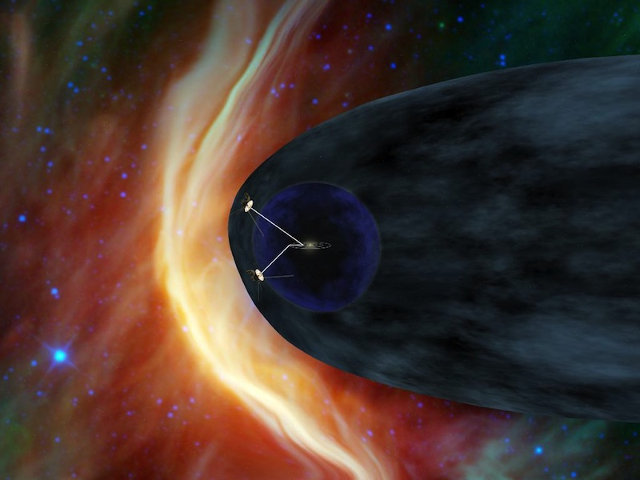On Spacecraft, Milestones, and Progress
Curiosity’s findings stole the show on Monday and from a scientific standpoint they are rather tantalizing. Mars leaves a great deal of mystery to be uncovered. However, I believe the more stirring and historically interesting find came from another small nuclear powered probe launched thirty some years ago.
Voyager 1 is currently the furthest manmade object that has ever been sent out from Earth and the Voyager program as a whole is the longest running space exploration mission humans have ever put forth. It was reported a few years back that Voyager 1 was believed to be closing in on the edge of our solar system. Although the readings from the probe's still functioning sensors differed from the expected. This sent scientists back to the models to try and figure out what was going on. After some time to ponder and some new data coming in over the last few months it appears that the Voyager 1 craft is indeed nearing the edge of the solar system. I won’t weight you down with the specifics; the official NASA release on the data is very in depth for those interested.
 Voyager 1 and 2 on their way out of the solar system. Image source:NASA
Voyager 1 and 2 on their way out of the solar system. Image source:NASA
The significant thing here is the fact that a piece of human technology is on the cusp of interstellar space. After traversing millions of miles, making close encounters with the outer planets, diligently radioing back a wealth of data the outer most reaches of our tiny, backwater solar system Voyager 1 is about the break loose and continue on a journey to the stars.
Think about that for a minute. Just sit back and take it all in.
It’s easy to lose track of the significance of such an accomplishment in an era where humans living among the stars is common in our fiction. Considering the fact that the first airplanes were put into service just over a century ago and the first orbital flights of unmanned satellites happened just over sixty years ago this is an astonishing accomplishment. In age where GPS and nearly instantaneous worldwide communication are available to nearly everyone it’s hard to imagine just how far we’ve come in such a short time. A century is just the blink of an eye on the cosmic scale, barely enough time for a few generations of even our own species to come and go. In that same time we’ve survived numerous threats to our very survival. Most of them caused by own our technology and ambition, the very same thing that has sent humans and our robotic counterparts to other worlds. Yet, here we are, about to leave the boundaries of our cosmic backyard.
Voyager 1 is the forerunner. The first step in what I hope will be a continued age of discovery and exploration. Once it crosses the heliopause we can say humanity has left its mark not only on the Earth or the solar system, but also on the galaxy. We’ve ridden our proverbial bicycles across the street into unknown territory. Truly a testament to our own potential, to what can be accomplished by a few simple primates working hard on a small greenish blue planet in the nondescript corner of the universe.